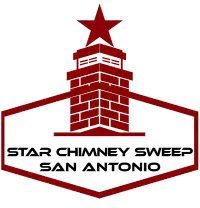Chimney inspections are essential for maintaining the safety and efficiency of your fireplace and chimney system. There are three levels of chimney inspection, each with specific purposes and procedures. Knowing what each level involves can help you understand the importance of regular inspections and ensure your chimney remains in optimal condition.
Introduction to Chimney Inspections
Chimney inspections are crucial for identifying potential hazards and ensuring your chimney operates safely. The National Fire Protection Association (NFPA) established three levels of chimney inspection to address various situations and needs. Each level offers a different depth of examination, tailored to specific circumstances and potential issues.
Regular chimney inspections help prevent fires, carbon monoxide poisoning, and structural damage. They ensure your chimney system is free of obstructions, properly vented, and in good condition. By understanding the three levels of chimney inspection, you can make informed decisions about your chimney maintenance.
Level 1 Chimney Inspection
A Level 1 inspection is the most basic type of chimney inspection. It is recommended for chimneys that have been regularly maintained and have not undergone any significant changes.
Scope of Level 1 Inspection
- Visual Examination: The inspector performs a visual examination of accessible parts of the chimney, including the interior, exterior, and connections.
- Routine Check: This level includes checking the chimney for blockages, creosote buildup, and signs of damage.
- Basic Tools: Basic tools such as a flashlight are used, but no special equipment or dismantling is involved.
When to Schedule a Level 1 Inspection
- Annual Maintenance: Schedule a Level 1 inspection annually if you use your chimney regularly and there have been no changes or issues.
- New Homeowners: It’s also suitable for new homeowners to ensure the chimney is safe and functional.
Level 2 Chimney Inspection
A Level 2 inspection is more comprehensive than a Level 1 inspection. It is required when changes have been made to the system or when property ownership changes.
Scope of Level 2 Inspection
- Visual and Internal Examination: In addition to the Level 1 inspection, Level 2 includes an examination of accessible areas within attics, crawl spaces, and basements.
- Video Scanning: A video scan of the flue interior is often included to check for hidden damage or blockages.
- Dismantling: No dismantling of permanent parts is required, but areas like the chimney crown and flashing are inspected more thoroughly.
When to Schedule a Level 2 Inspection
- System Changes: If you have made changes to the system, such as a new liner or appliance, a Level 2 inspection is necessary.
- Real Estate Transactions: Required when buying or selling a property to ensure the chimney’s condition and safety.
- After Events: Recommended if there has been a malfunction, fire, or earthquake affecting the chimney.
Level 3 Chimney Inspection
A Level 3 inspection is the most detailed and invasive type of chimney inspection. It is conducted when serious hazards are suspected.
Scope of Level 3 Inspection
- Comprehensive Examination: Includes all aspects of Level 1 and Level 2 inspections, plus a thorough examination of concealed areas.
- Dismantling: May involve the removal of parts of the chimney structure or building components to access areas of concern.
- Special Equipment: Specialized tools and equipment are used to detect and diagnose severe issues.
When to Schedule a Level 3 Inspection
- Severe Issues: When serious problems are detected or suspected during Level 1 or Level 2 inspections.
- Chimney Fires: After a chimney fire or other catastrophic events to assess the extent of the damage.
Table: Comparison of Chimney Inspection Levels
| Feature | Level 1 Inspection | Level 2 Inspection | Level 3 Inspection |
| Visual Examination | Yes | Yes | Yes |
| Video Scanning | No | Yes | Yes |
| Internal Examination | No | Yes | Yes |
| Dismantling | No | No | Yes |
| Tools and Equipment | Basic | Advanced | Specialized |
| Suitable For | Routine checks | System changes, real estate | Severe hazards, chimney fires |
FAQs
1. Why is a Level 1 inspection necessary?
A Level 1 inspection is essential for annual maintenance. It ensures that your chimney is free of obstructions and damage, and that it’s safe to use.
2. When should I get a Level 2 inspection?
Schedule a Level 2 inspection when there are changes to your chimney system, property ownership changes, or after a malfunction or natural disaster.
3. What does a Level 3 inspection involve?
A Level 3 inspection includes all elements of Level 1 and Level 2 inspections, plus a thorough examination of concealed areas, and may involve dismantling parts of the chimney.
4. How often should I have my chimney inspected?
Chimneys should be inspected at least once a year. More frequent inspections may be necessary if you use your fireplace often or if any issues arise.
5. Can I perform a chimney inspection myself?
While you can perform basic checks, professional inspections are recommended. Certified inspectors have the tools and knowledge to identify and address potential hazards.
6. What are the signs that I need a chimney inspection?
Signs include smoke entering your home, unusual odors, visible damage, and poor fireplace performance. If you notice any of these, schedule an inspection immediately.
7. Why are chimney inspections important for safety?
Inspections identify potential hazards like blockages, creosote buildup, and structural damage, preventing fires and ensuring safe operation.
Conclusion
Understand the three levels of chimney inspection is vital for maintaining a safe and efficient chimney system. Regular inspections help identify potential hazards, ensure proper functioning, and extend the lifespan of your chimney.
For residents in San Antonio, Texas, Star Chimney Sweep San Antonio offers comprehensive chimney inspection services to keep your chimney in top condition.


